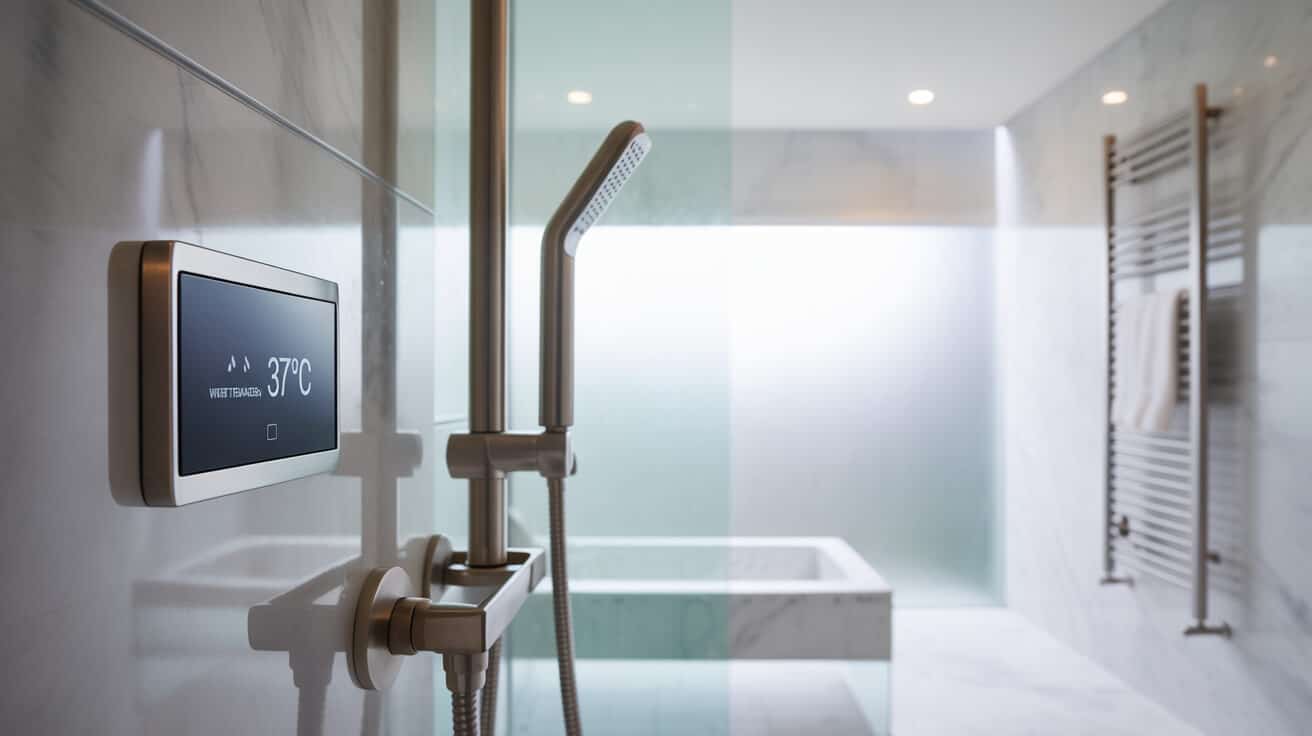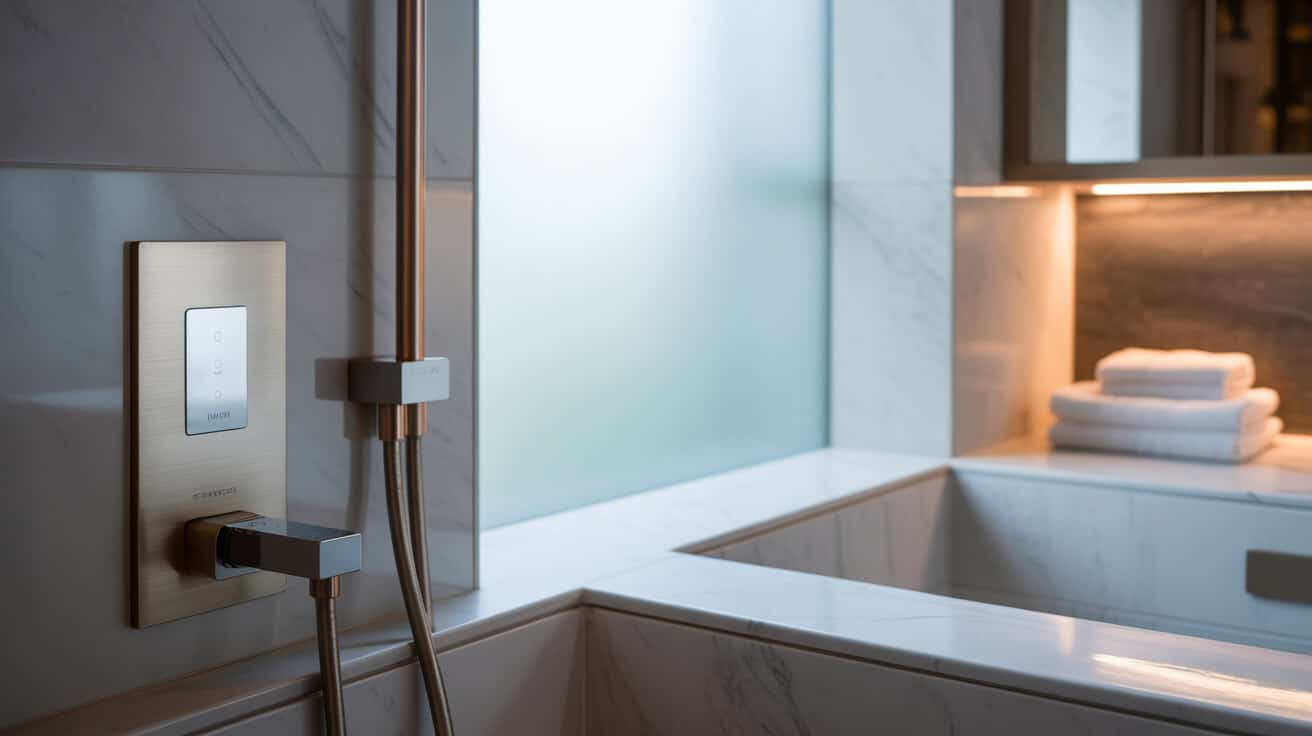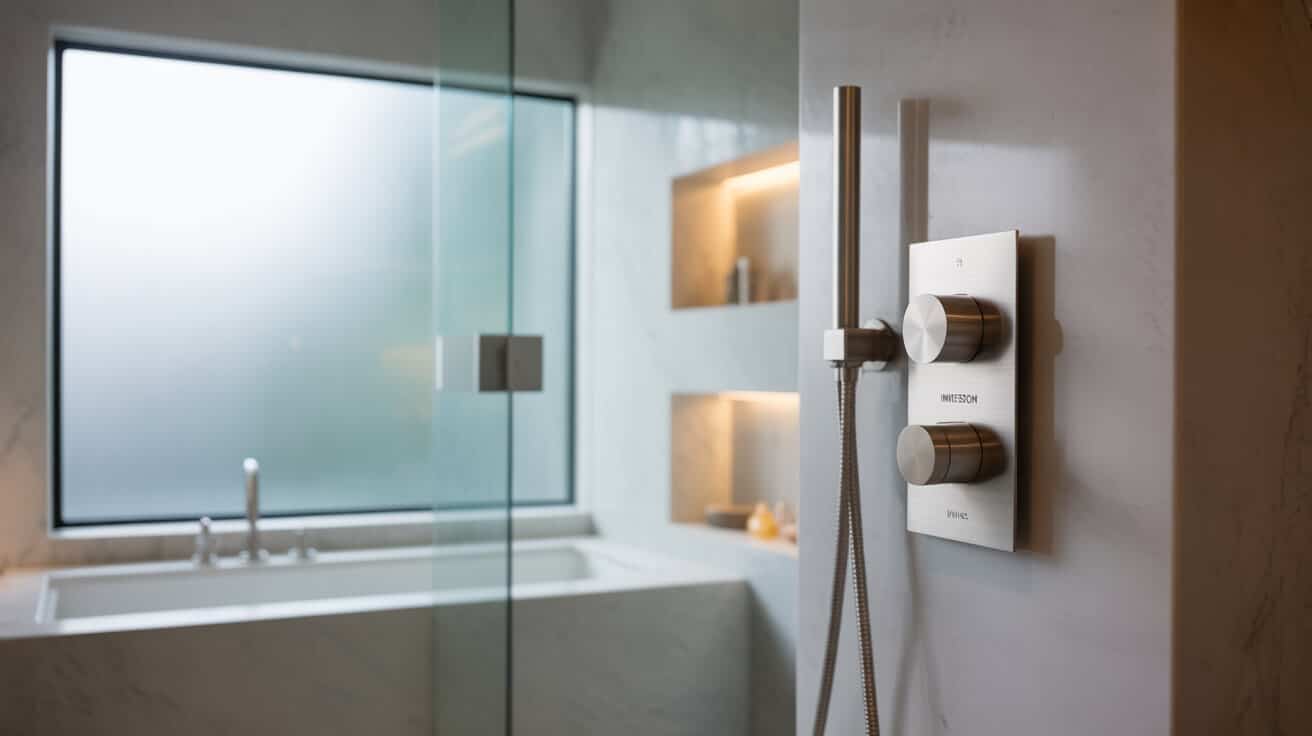Smart immersion controllers improve your ability to configure and monitor hot water production, linking programmable schedules with robust safety routines and direct control via connected apps or panels. These devices combine hardware—sensors, relays, processors—and software, allowing you to manage hot water heating according to demand, tariff brackets, or legal compliance cycles. With widespread adoption by property managers, landlords, facilities operators, and homeowners, smart immersion controllers have become an essential component of effective hot water system management and regulatory assurance within modern plumbing and heating company services.
Etymology or Name Origin
The term “immersion controller” originates from its dominant function—managing the immersion heater, a submerged electric element that heats water in a storage cylinder. The evolution from “manual” or “timer” controls toward “smart” solutions parallels the digitalization of building services and reflects substantial shifts in customer expectations regarding safety, efficiency, and convenience. As the technology matured, manufacturers and industry regulators adopted the descriptor “smart” to signify the presence of digital scheduling, data feedback, and remote interfaces.
Overview / Context
Immersion controllers play a pivotal role in water heating systems where electrical immersion heaters provide either primary or backup hot water for domestic and commercial properties. In properties without access to gas, or in buildings requiring redundancy, immersion heaters are essential for ensuring regular hot water supply. A transition from simple switches and mechanical timers to programmable, intelligent controllers has been propelled by rising utility costs, electrification policies, health & safety mandates, and an increased desire for digital building management.
Your property’s operational success, safety profile, and compliance record now frequently rely on the performance and configurability of hot water control systems. Whether you are managing a single household, a complex portfolio with multiple tenancies, or a commercial facility, the combination of programmable scheduling, real-time temperature data, compliance cycles, and remote overrides delivers unmatched flexibility. Heating firms like Plumbers 4U increasingly integrate advanced controllers as standard practice, responding to market demand for seamless installations, accessible maintenance, and enhanced tenant or occupant experience.
History
Origins
Immersion heating controls originated as strictly mechanical devices, deploying wall switches or rotary timers for basic on/off operation of immersion elements within hot water cylinders. These controls provided no memory, automation, or protection except for rudimentary thermal cut-outs. The risks included forgotten heaters, wasteful 24-hour operation, and the absence of safety routines—conditions that often increased energy costs and occasionally led to unsafe water temperatures.
Industrial emergence
By the late twentieth century, the landscape began to shift with the introduction of programmable digital timers, pressure for regulatory compliance, and the increasing complexity of hot water systems found in commercial facilities, blocks of flats, and large-scale rental housing. Early programmable immersion controllers introduced electronic logic, LCD displays, elementary scheduling, and fault detection, but were largely stand-alone and disconnected from wider property management systems.
As the private rental sector expanded, legislation such as the UK’s Building Regulations and HSE guidance drove demand for precise, auditable, and safer hot water control. The concept of automated compliance cycles (e.g., weekly anti-legionella events) entered mainstream adoption.
Contemporary evolution
Recent years have witnessed the integration of microprocessors, wireless modules (e.g., Wi-Fi, Zigbee), enhanced sensor arrays, and software-based feedback. Modern smart controllers can automatically execute and record compliance safety routines, optimise hot water production for off-peak tariffs, and communicate faults to property managers in real time.
Manufacturers, in coordination with installation specialists such as Plumbers 4U, have refined these devices to support plug-and-play upgrades, digital onboarding, and cloud-linked dashboards. For businesses managing multiple sites, facility operators, or landlords seeking remote control, digital reporting and advanced diagnostics, smart immersion controllers represent an operational standard rather than an upgrade.

Concept / Description
A smart immersion controller is engineered to manage the power, timing, and safety of electric immersion heaters using a combination of hardware and software. These controllers consist of an embedded microprocessor, sensor arrays (temperature, current, sometimes water level), and actuator (such as a relay or solid-state switch) to control electric feed to the immersion element.
The hardware architecture usually features:
- Processor/Controller Board: Executes scheduling routines, compliance cycles, overrides, and data logging.
- Temperature and Current Sensors: Monitor system status to support accurate cut-offs and verification of scheduled cycles.
- Relay/Solid-State Switch: Provides safe circuit isolation and heating element control.
- Display and User Interface: Digital panels, touch-buttons, or configuration menus for manual programming and feedback.
- Connectivity Module: Allows you to conduct remote configuration, monitoring, and notification receipt from web dashboards or smartphone apps.
- Safety Features: Overheat cut-outs, manual override modes, event logging, default schedules to maintain hot water in the event of communication failure.
- Physical Enclosure: Designed for tamper resistance, easy wiring, and compliance with International Electrotechnical Commission (IEC) and national safety standards.
Protocols for data transfer may range from local APIs to cloud-based dashboards, with some controllers offering integration with wider building management systems (BMS), mobile applications for scheduling/alerts, and downloadable logs for compliance audits.
In practice, smart immersion controllers can:
- Schedule hot water cycles in alignment with your occupancy, tariff periods, or compliance routines.
- Initiate anti-legionella cycles automatically and provide timestamped exportable records.
- Allow trusted third parties (property managers, Plumbers 4U engineers) to carry out diagnostics or maintenance without a site visit.
Functionality / Purpose / Applications
Scheduling and hot water optimization
A core value of a smart immersion controller is programmable scheduling. You can set heating cycles to match your household patterns, maximise use of off-peak energy tariffs, or ensure on-demand hot water for tenants, guests, or staff. Most controllers now allow real-time updates, holiday modes, and “boost” features for unexpected requirements.
Remote control and feedback
Remote operation allows for substantial flexibility. From your smartphone, desktop dashboard, or dedicated web portal, you can activate, adjust, or disable hot water heating. Push notifications provide reassurance or prompt immediate intervention in the event of hardware failure, abnormal temperature, or energy overuse.
Safety and health compliance
Automated anti-legionella cycles are a standard feature, raising water temperature above regulated thresholds on a schedule and maintaining logs for legal compliance. By ensuring water is stored above 60°C as required, the controller reduces the risk to your customers, tenants, or building occupants. Audit-ready records can be exported to fulfil requirements for private landlords, HMO properties, and commercial health/safety compliance.
Fault detection and diagnostics
Advanced controllers constantly monitor system state—including heating element current draw, circuit performance, and tank temperatures. Onboard logic can distinguish between expected operation and failure states (e.g., dry run, element burn-out, sensor failure), triggering alerts and supporting diagnostics before costly or disruptive breakdowns occur.
Applications in multi-unit, portfolio, and commercial management
Portfolio landlords, letting agencies, and facilities managers benefit from centralised control and monitoring, saving time, labour, and costs. Commercial premises can use controller data to demonstrate compliance to regulators or clients, optimise energy contracts, and improve asset longevity via more effective maintenance protocols.
Classifications / Types / Variants
Controller typologies
- Mechanical Controllers: Legacy switches or rotary timers with no scheduling or compliance logic. Cost-effective for initial installation but offer no advanced functionality.
- Digital Programmable Controllers: Standalone devices with electronic scheduling, accessible via local digital panels.
- Smart Controllers: Connected units featuring programmable interfaces, remote app access, automatic compliance events, multi-user support, and advanced data analytics.
Element compatibility
- Single-element Controllers: Designed for standard cylinders with a single immersion heater. Simpler, but less flexible for split-tariff or backup operation.
- Dual-element Controllers: Support two heater elements for peak/off-peak scheduling or redundancy.
- Brand Variants: Selectable by application—Plumbers 4U engineers routinely instal leading brands such as Eddi, Drayton Wiser, Cotherm, Timeguard, and Tesla Smart Immersion units. Compatibility with tank and wiring configuration is assessed during site review.
Application and integration
Controllers are further classified by their:
- Native compatibility (vented vs. unvented cylinders; compression or solder fit).
- Ability to integrate with central BMS/BEMS or remain standalone.
- Protocol openness (proprietary systems, OpenTherm, open APIs for third-party app linking).
Systems / Tools / Methodologies
Installation and commissioning
Installation of a smart immersion controller typically follows a rigorous workflow:
- Site survey and compatibility assessment: Evaluating your cylinder type (vented/unvented), wiring state, and access.
- Isolation and electrical safety validation: Ensuring mains supply is safely disconnected and conformant with legal requirements (Part P).
- Device mounting and wiring: Physical installation of the controller unit, connection to heating element(s), and integration with any on-site sensor or BMS connectivity module.
- System validation: Verifying sensor inputs, communication link, fail-safes, and power integrity.
- Commissioning and user onboarding: Initial programming, scheduling, and demonstration for you and your staff or tenants.
- Certification and reporting: Signoff by a qualified electrician (Part P) and, for unvented systems, validation by a G3-certified plumber.
Tools and diagnostics
Installers typically use a toolkit that includes:
- Voltage/polarity testers
- Clamp metres (for current checks)
- IR thermometers
- Data terminals (for protocol test and device handoff)
- Digital interface for firmware setup or upgrades
Servicing may involve local or remote diagnostics through app dashboards or direct controller interface. Top plumbing firms coordinate periodic maintenance and firmware updates as part of asset management contracts.
Commissioning methodology
Best practices call for:
- Testing each scheduled cycle and compliance routine.
- Backup documentation and digital event logs for legal records.
- Onboarding you to the app/dashboard, including troubleshooting and maintenance guidance.

Stakeholders / Entities Involved
Homeowners
As the primary users, homeowners frequently seek smart immersion controllers for energy savings, out-of-hours scheduling, and peace of mind—especially during holidays or periods of intermittent occupancy.
Landlords and letting agents
You may derive significant benefit through compliance automation, remote management of tenant requests, and audit log access. Smart immersion systems simplify risk management across a property portfolio and streamline reporting to meet legal or client needs.
Property managers and facility directors
Facilities with large water demand (Hotels, Guest Houses, care settings) require industrial-grade controllers with BMS integration and user-level segmentation for complex scheduling and compliance requirements.
Plumbing & heating companies
Companies such as Plumbers 4U increasingly specify and instal smart controllers as a standard. Qualified engineers deliver commissioning, compliance reporting, and aftercare, reducing the operational burden on your organisation.
Product manufacturers and technology partners
These stakeholders focus on constant improvement—new compliance standards, remote firmware updates, compatibility with emerging BMS/energy management protocols, and end-user support.
Entities such as HSE, WaterSafe, or NICEIC monitor compliance with installation, maintenance, and safety standards, inspecting properties (especially rented or public) for correct records and certifications related to hot water safety.
Legal / Regulatory / Ethical Considerations
Installation regulations
UK electrical installations (including controllers) require compliance with Part P, mandating installation and signoff by qualified personnel. For unvented cylinders, G3 regulations further require certified installation with pressure relief, anti-scald, and overheat-safe features.
Hot water and health compliance
Landlords are legally obligated to manage Legionella risk, typically by ensuring water is stored/play-cycled above regulated temperature thresholds. Smart controllers log these cycles and deliver compliant records automatically.
Data protection and privacy
Features that transmit or log data externally (apps, cloud services) must comply with data protection statutes and best practices, such as explicit user consent, data encryption, and opt-outs for remote monitoring.
EPC and insurance context
Your property’s Energy Performance Certificate (EPC) score can be positively influenced by documented efficiency improvements delivered by smart control. Some insurance products or asset owners require demonstration of compliance and event logs for claims processing or annual safety certification.
Installer accreditation and warranties
Your compliance and warranty protection both depend on proper installation and correct completion of commissioning records by certified firms or engineers. Plumbers 4U, for example, operates within these regulatory boundaries, providing peace of mind via traceable documentation and accredited staff.
Performance Metrics / Data / Measurements
Energy analytics
Controllers track cumulative and session-based energy use, allowing you to verify savings against historic baselines. Top-tier models display usage data within the app or dashboard, supporting your resource optimization efforts.
Scheduling and compliance
Key performance indicators include compliance with scheduled heating cycles, occupancy-driven performance, and legal obligations around legionella prevention or commercial safety.
Fault monitoring and system health
Continuous monitoring of system state provides you with alerts for failures such as element burnout, dry-fire risk, sensor faults, and communication loss. Responsive maintenance can then be triggered locally or via remote contractor dispatch.
| Metric | What it Measures | Typical Reporting Format |
|---|---|---|
| Session Energy Use | kWh per heating cycle | App/dashboard |
| Compliance Cycle Frequency | Number of anti-Legionella events/month | Logged + exportable |
| Uptime | % of scheduled cycles completed | Monthly/annual summary |
| Fault Occurrences | Instances of error, trigger, or override | Alert + event log |
| User Scheduling Changes | Number of schedule modifications | Audit log |
User experience and accessibility
Modern controllers increasingly rate for interface clarity, language options, and compatibility with voice assistants or accessibility software to serve a wider mix of property stakeholders.
Challenges / Barriers / Limitations
Technical complexity
Retrofit installations may encounter complications with legacy cylinder types, non-conforming wiring, or inadequate data connections. Technical support is essential to resolve and future-proof such scenarios.
Initial cost and learning curve
Initial expense—acquisition, installation, and commissioning—remains higher than for basic timers or mechanical switches. The complexity of initial setup and user onboarding is mitigated through guided app wizards, support lines, and, via your services provider, custom walkthroughs.
Protocol fragmentation
With a diverse manufacturer landscape and lack of universal integration standards, controllers may not always interoperate with every energy platform, digital assistant, or legacy building management system.
Data security
As with any device transmitting data beyond your premises, smart immersion controllers require ongoing firmware updates and robust password/user credential management.
Legal and regional variability
Differences in national standards—regarding temperature thresholds, data protection, or documentation—mean that products and installation procedures must be tailored to your jurisdiction and application.
Impact / Influence / Legacy
The wide adoption of smart immersion controllers has transformed not only water heating energy efficiency but also the operational and compliance landscape for property managers, letting agents, and facilities maintenance professionals. By automating compliance, integrating usage audit logs, and reducing energy overspend, these devices enable you to balance legal obligations with cost-driven maintenance regimes.
For plumbers and heating firms, especially those like Plumbers 4U, advanced controller installation has become a value-differentiator, driving greater customer satisfaction, repeat business, and secondary service opportunities in monitoring and compliance documentation. The normalisation of remote diagnostics and digital scheduling within the property sector signals an expectation shift toward data-driven, responsive property management as standard.
Future directions, cultural relevance, and design discourse
Smart immersion control technologies are poised for further evolution, with the integration of adaptive AI scheduling, real-time occupancy detection, and seamless inclusion in whole-building automation. Upcoming development cycles focus on:
- Universal protocol standardisation: (cross-device harmony),
- Predictive and preventative maintenance: , minimising downtime through learned heuristics,
- Cloud-agnostic control modes: as digital sovereignty becomes a user right,
- Ensuring equitable access: — improved onboarding and accessibility for older adults or individuals with disabilities,
- Interaction with decarbonization policy: as property energy efficiency is increasingly tied to regulation and asset valuation,
- Expansion into large-scale commercial and institutional portfolios: for high-uptime, safety-critical operations,
- Cultural normalisation: of digital risk management, with compliance logs and fault reporting becoming a universal expectation, not a specialised option.
Within this context, your expectations as a property owner, manager, or tenant increasingly include detailed hot water reporting, effortless on-demand scheduling, and robust compliance by design—capabilities that are most reliably achieved through a partnership with qualified firms such as Plumbers 4U.

